Potential to mix up Omicron booster with conventional vaccine raises concerns
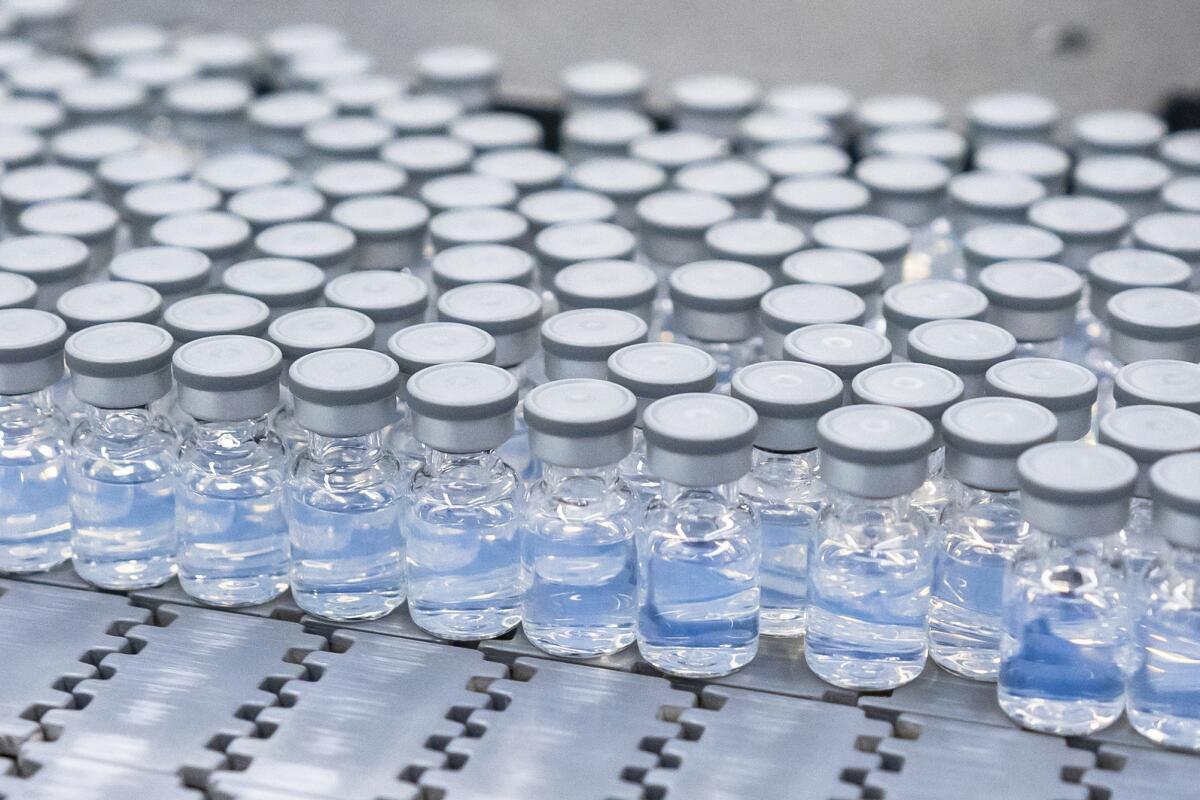
- Share via
Experts are voicing concerns about the potential for vaccine providers to mix up the Omicron booster vial with those used for conventional vaccines.
The concern emerged at a public meeting of advisers to the U.S. Centers for Disease Control and Prevention last week and was echoed on Saturday by a panel of health experts — the Western States Scientific Safety Review Workgroup — for four states, including California.
“The workgroup remains concerned about the potential for errors in the administration of the various COVID-19 vaccines, given that formulations for different age groups look alike,” the group said in a statement. “It is imperative that clear COVID-19 vaccination guidelines be disseminated to all vaccine providers.”
The new shots are known as bivalent vaccines. They’re designed to protect not only against the original coronavirus strain but also both BA.5 and another Omicron subvariant called BA.4. The new booster is only authorized for people age 12 and up.
The conventional shots are monovalent vaccines, intended to protect only against the original coronavirus strain.
The conventional vaccine formula is still being used for people who haven’t yet been vaccinated.
The potential for confusion is from the color of the cap for the vials. The color of the vial caps of some of the new booster shots is identical to those of older shots.
For instance, the conventional and updated bivalent Pfizer shots for those age 12 and up are inserted in a vial capped with the same color — gray, according to slides from a presentation that the CDC made to scientific advisers last week. Clinicians will need to read the label to distinguish between the conventional vaccine and the updated booster.
Both vials contain the same amount of vaccine — 30 micrograms — but the conventional vaccine was designed only against the original coronavirus strain, while the updated booster has half set aside for the original strain, and the rest against the BA.4/BA.5 Omicron subvariants.
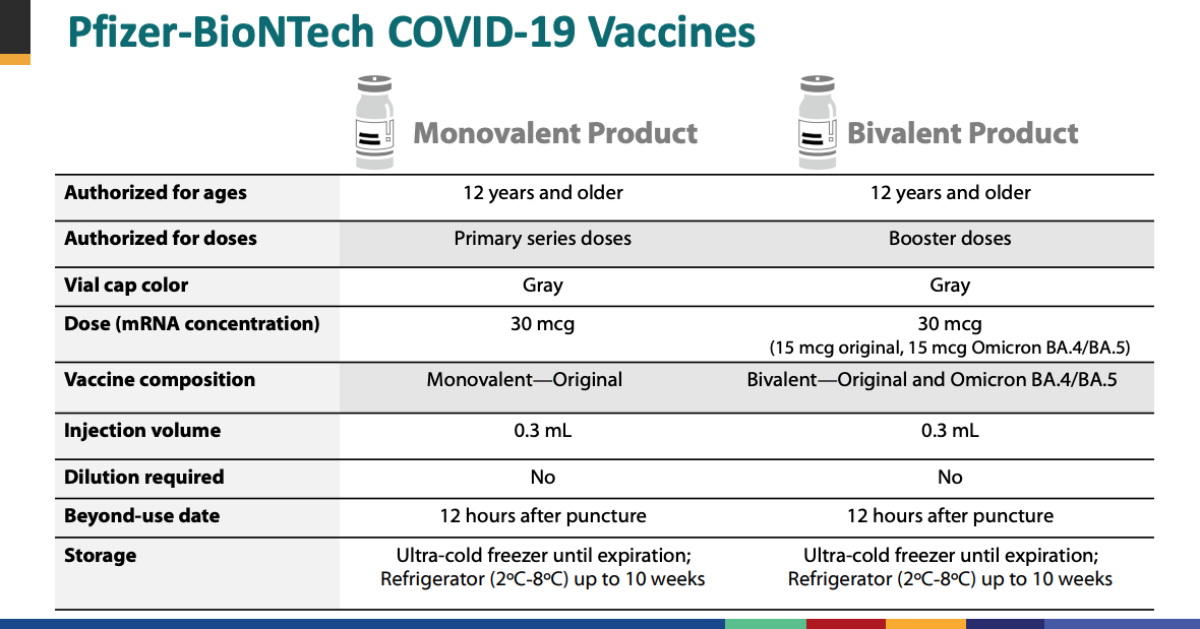
The label for the updated Pfizer booster includes the phrasing “Bivalent” and “Original and Omicron BA.4/BA.5.”
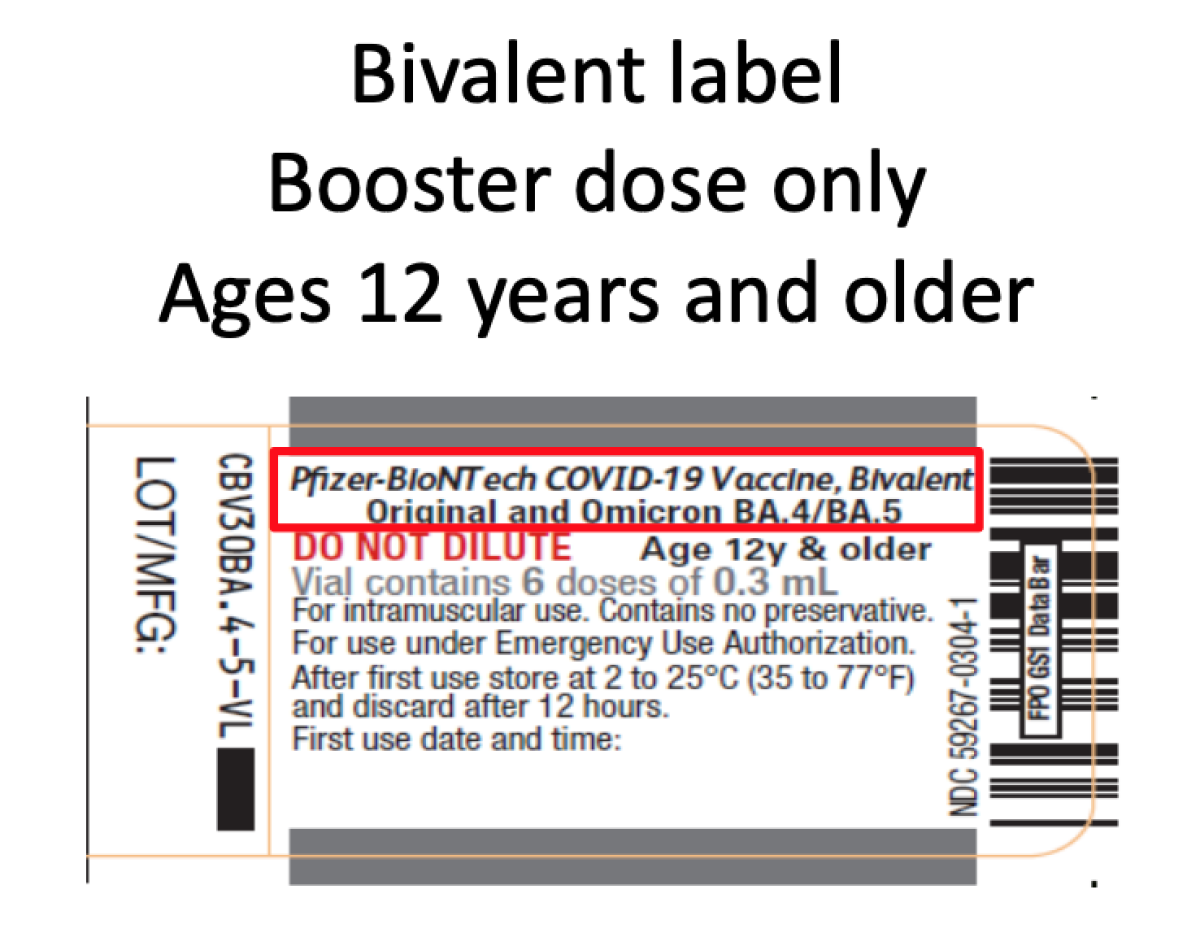
For Moderna’s vaccines, one possible source of confusion is that the vial cap is dark blue for both the conventional primary vaccine for children age 6 to 11, and the updated booster for adults.
Both vials have the same dose of vaccine — 50 micrograms. But the children’s version of the primary dose is all designed against the original coronavirus strain. The adult updated booster has half its volume designed against the original strain, and the rest against the BA.4/BA.5 subvariants.
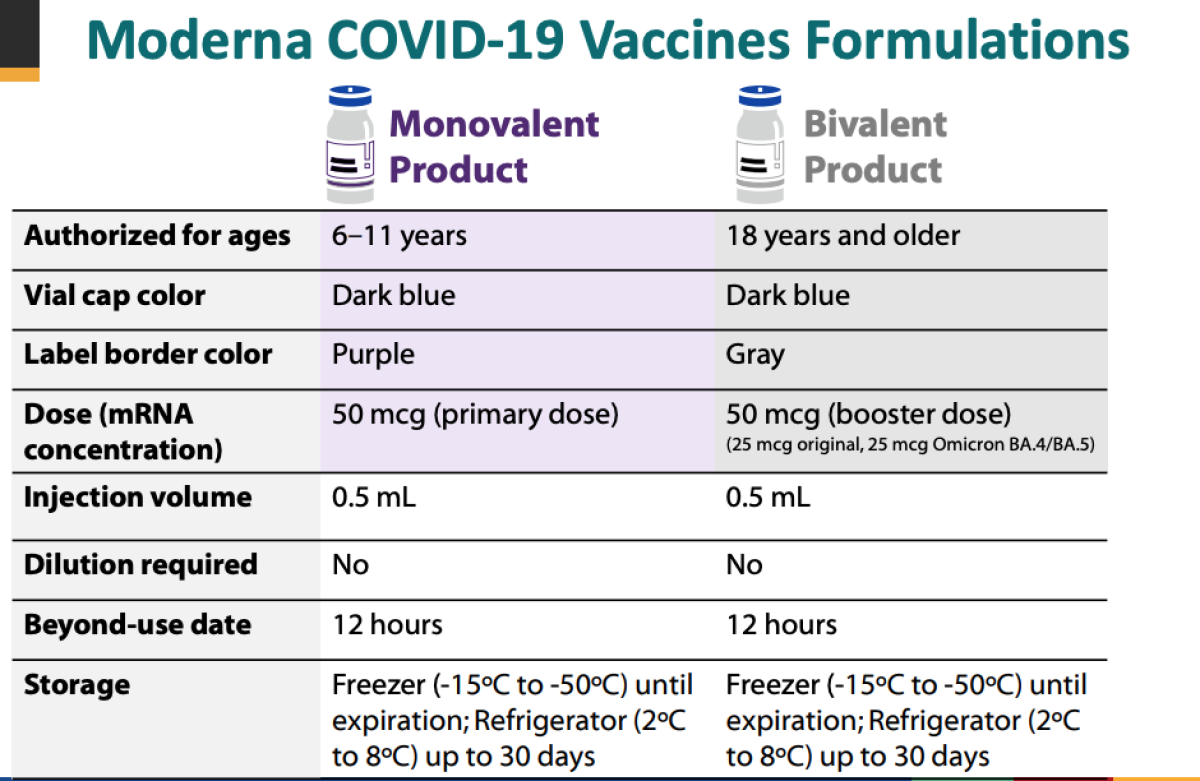
The label for the updated Omicron booster has the phrasing “Bivalent” and “Original and Omicron BA.4/BA.5.”
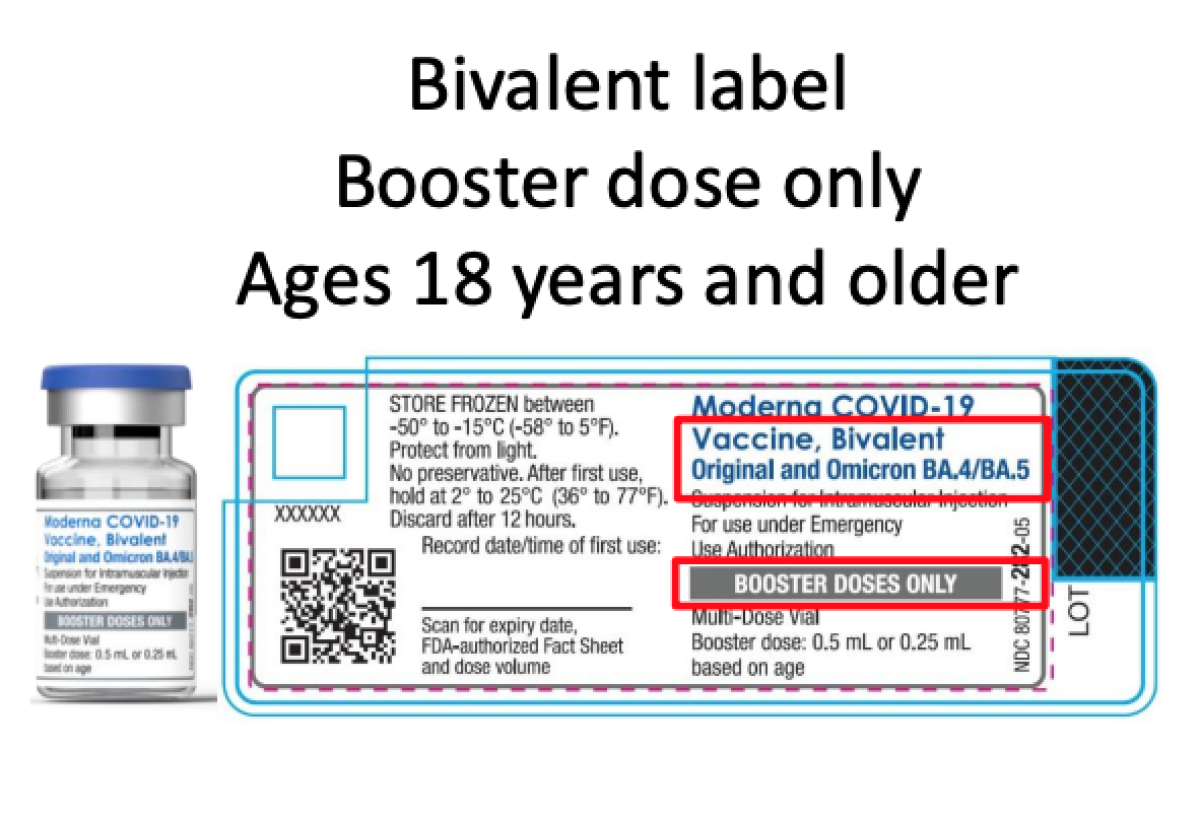
Vaccination providers will need to take care to make sure they’re administering the right vaccination to the right person.
At a press briefing Tuesday, the White House COVID-19 response coordinator, Dr. Ashish Jha, said FDA scientists are working to make sure vaccination providers are properly training staff to make sure “that people can get the right vaccination.”
“We have not seen any evidence of wide-scale mistakes or people getting the wrong vaccine. I am confident that the system is continuing to work effectively, but I know the FDA continues to monitor this very closely,” Jha said.
CDC director Dr. Rochelle Walensky said her agency is actively working to distribute photos of the bottle caps and educating vaccine administrators to “minimize confusion.”
More to Read
Sign up for Essential California
The most important California stories and recommendations in your inbox every morning.
You may occasionally receive promotional content from the Los Angeles Times.












